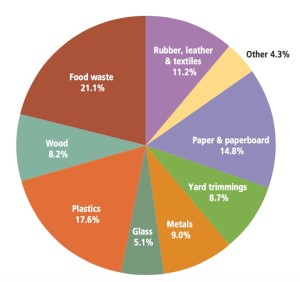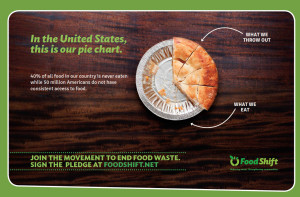“One man’s trash is another man’s treasure.” This quote is proven to be true in the case of a Canadian couple, filmmakers Jen Rustemeyer and Grant Baldwin who spent 6 months eating nothing but discarded food out of dumpsters, a decision that they made after seeing the large amount of edible food wasted just because they were not up to the consumers’ standard of being “fresh”.
“We found 18-foot Dumpsters all the time filled with food, and the majority of that was because it was near the date label, but rarely past it,” said Baldwin, who spent 6 months hunting for discarded food inside dumpsters and behind wholesale warehouses. Food waste is a very serious issue in the United States. It is the largest single source of waste in the country, beating out other waste products such as plastic and paper in landfills. According to the US Environmental Protection Agency, more than 20% of what goes into municipal landfills is food, with food waste weighing at a total of 35 million tons in 2012.
Surprisingly, most of these food waste were thrown out by farmers and warehouses. It turned out that there are specific rules and regulations that are put in place by grocery stores that the farmers have to follow. For instance, after visiting a peach farmer here in California, Rustemeyer and Baldwin found out that the farmer has to throw out between 30 to 70 percent of his peaches because they were rejected by grocery stores due to cosmetic issues such as it not being of a particular size. Supermarkets tell farmers what diameter, length and curvature that their produce has to be before actually accepting them. And what happens if the produces are not up to standard? They become food waste.
Food waste also impacts the economy significantly. The Environmental Protection Agency estimates that the typical American family throws out about $1,600 worth of food each year, in a country where nearly 18 million households struggle to put food on their table. The United Nations estimates that a third of all the food produced in the world is never consumed, making for a total of about 1.3 billion tons of waste a year. According to the Natural Resources Defense Council, in the United States alone, about 40 percent of all food, worth an estimated $165 billion, is wasted. Especially during holiday season, whereby household waste increases by more than 25% between Thanksgiving and New Year’s Day every year.
In conclusion, the next time you decided to toss out that bag of mixed greens that has been sitting in your refrigerator just because it looks wilted, think about how you’re negatively contributing to our economy.


Leave a Reply
You must be logged in to post a comment.